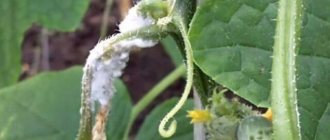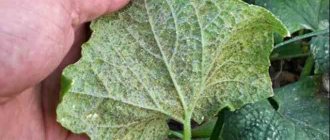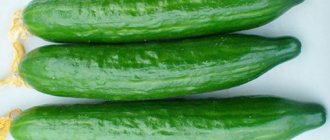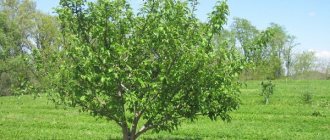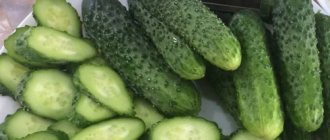History of appearance
Khrustik F1 is a cucumber hybrid created by one of the most famous Russian agricultural companies, Gavrish. This is the achievement of a whole team of breeders. The work was carried out on the basis and with the participation of the Moscow Research Institute for Breeding Vegetable Crops, so both organizations are the originators. An application for admission to registration on the territory of the Russian Federation was submitted in 2011. In the same year, the hybrid was included in the State Register.
Also, its prevalence is facilitated by its suitability for planting indoors and outdoors. Officially, it is considered a hybrid for unheated greenhouses, but the experience of gardeners shows that plants successfully develop and bear fruit in ordinary beds.
According to the official conclusion, the Khrustik cucumber is suitable for cultivation in any Russian region
Important! There is a cucumber hybrid very similar in name and description - Miracle Khrustik F1 from the agricultural company Aelita. However, unlike the “ordinary” Khrustik, it requires pollinating insects.
Pros and cons of the variety
- The popularity of this hybrid is contributed to by:
- excellent taste of fruits;
- versatility in use (good both fresh and for pickling);
- high productivity;
- early ripening;
- resistance to temperature changes;
- high immunity to diseases;
- absence of bitterness and yellowness of fruits;
- almost 100% seed germination;
- good keeping quality.
Unlike ordinary greens, the parthenocarpic hybrid does not require pollination by bees and other insects, which allows it to be grown both in open ground and in a greenhouse. At the same time, belonging to parthenocarpics means that the fruits do not have seeds, so it will not be possible to prepare planting material yourself.
This can be considered some disadvantage of the variety. Another nuance of growing the Khrustik hybrid is the formation of numerous ovaries and, as a result, abundant fruiting. Gardeners should not delay harvesting so that ripened fruits do not interfere with the growth of new ones.
Description of cucumbers Khrustik F1
The hybrid belongs to the category of indeterminate. It does not have a “programmed” limit for shoot growth. If they are not trimmed, the cucumber vines can stretch 3-3.5 m. The growth rate is quite high, but the stems do not branch intensively. The foliage is average, the leaves are not too large.
The flowers are predominantly “female”. Each of them is a future fruit ovary. Flowering in bunches. According to the originator, each “bundle” consists of 7-8 flowers, the State Register and the experience of gardeners indicate that most often there are 2-3.
The shoots are quite powerful, but the Khrustik cucumber bushes still need support
Khrustik F1 cucumbers are one-dimensional (weighing about 120 g and 10-12 cm long), with a regular cylindrical shape. The skin is thin but durable, almost uniform in rich green color, slightly “diluted” with lighter thin strokes and blurry spots. There are few large tubercles and white spines, the edges are light and relatively sparse.
The pulp of cucumbers is very dense, juicy, without voids, with a pronounced fresh cucumber aroma and small, almost imperceptible seeds when eaten. The sweetish taste is officially described as "excellent". The absence of bitterness is genetic.
The purpose of the fruit is universal. Khrustik cucumbers are very good fresh (both on their own and as a component for salad, okroshka) and in homemade preparations. Often, for salting and pickling, “gherkins” weighing 60-80 g and 7-8 cm long are removed.
The fruits retain their characteristic distinct crunch and texture even after salting and pickling.
Variety varieties
Miracle crunch
The hybrid belongs to the parthenocarpic species of cucumbers that are capable of pollination without human intervention. In appearance, this feature of the Miracle Khrustik is excellent for growing both in open and closed ground. From the moment the sprouts appear until the fruit begins to ripen, 38–40 days pass. The plant is medium branched, indeterminate. Large leaf blades are painted bright green.
During the flowering period, the plant is covered mainly with female flowers. From 1 to 3 fruits are formed in one sinus. Cucumbers are cylindrical in shape, narrowed at the bottom. The tuberous surface is covered with short white spines. Thin dark green skin is diluted with white stripes that reach the middle of the fruit.
If the cultivation technology is followed, the weight of cucumbers varies in the range of 60–80 g, length - 9–10 cm. The dense, crispy flesh is endowed with a pronounced smell. Unlike some types of cucumbers, the Miracle Khrustik variety does not taste bitter. Productivity of greens per 1 sq. m. beds - 9–11 kg.
Cucumbers are suitable for fresh consumption and for preparing canned vegetables. The hybrid is especially successful after salting, as it retains most of the primary characteristics. Your grandson and granddaughter will definitely appreciate lightly salted crispy cucumbers.
Thanks to the painstaking work of breeders, the cucumber has the following advantages:
- high productivity;
- resistance to fungal diseases;
- short period of fruit ripening;
- suitability for transportation and keeping quality;
- good presentation and organoleptic characteristics;
For the description of a cucumber to be confirmed in practice, the crop needs to be properly cared for.
Little Khrustik
Gherkin cucumber Small Khrustik F1 is a new variety primarily for protected soil. The ripening period is average (45−55 days from germination), the yield is high (not less than 13 kg per 1 m2). Usually 2 ovaries are formed in the axils, from which cute little cucumbers grow, which perfectly retain the elasticity of the pulp when canned. With a fruit size of no more than 7 cm, its weight can reach 100 g.
Seeds can be sown in protected soil in early May. To do this, the soil is heated to at least 8 °C using manure humus and peat, drained with sand and enriched with mineral fertilizer. The seedlings are placed under film in mid-May in the phase of 3-5 true leaves. The distance between plantings is maintained at about 70 cm. Plant care is standard: watering every other day with warm water at the root; mineral supplements 1-2 times a month; loosening and mulching the top layer of soil; weeding. The regrown vines of cucumbers are tied up so that the entire stem is evenly provided with sunlight.
Balcony crunch
Cucumber Balcony crunch F1 is a parthenocarpic from the group of early ripening varieties, suitable for cultivation in beds, greenhouses, on a windowsill, on a balcony.
Ripening begins 40-45 days from germination.
What features are inherent in the hybrid:
- early ripeness;
- compact bushes;
- exclusively female inflorescences;
- in 1 sinus there are 2-3 fruits.
Cucumbers have a beautiful appearance, an even shape, and are used for canning in jars and for fresh consumption.
Fruit signs:
- length up to 10 cm;
- weight 80-95 g;
- cylindrical shape;
- consistency is tight, elastic;
- the color is rich;
- tubercles frequent, small;
- There is no bitterness in the taste.
Characteristics of Khrustik cucumbers
In addition to the appearance of bushes and fruits, their taste, gardeners take other indicators into account when choosing a variety. You need to determine in advance the most important criteria for yourself and be guided by them.
Productivity of Khrustik cucumbers
The originator in the description of the hybrid indicates its yield in the range of 10-11 kg/m². According to the State Register, the figures are higher – 14.4-15.3 kg/m². Cucumbers ripen en masse, in several “waves”.
Important! Khrustik is a parthenocarpic hybrid. It does not need pollinating insects to form fruit ovaries.
Regular harvesting of Khrustik cucumbers has a positive effect on the possibility of further fruiting of plants
Ripening and flowering dates
Khrustik F1 is an early ripening hybrid of cucumbers. From the moment the seedlings emerge from the seeds until the first fruits are collected, 44-48 days pass. Sometimes gardeners indicate a longer period - 50-60 days. This variation is due to different growing methods, which differ significantly in climatic and weather conditions.
The first flowers appear on plants in the 5-7 phase of the true leaf. It takes 14-17 days for the formation of fruit ovaries and ripening of Khrustik cucumbers.
Resistance to diseases and pests
Breeders have provided Khrustik cucumbers with innate immunity against powdery mildew and cladosporiosis. The experience of gardeners shows that they are practically not susceptible to the mosaic virus and various types of rot. The most dangerous disease for a hybrid is peronosporosis (downy mildew).
Khrustik cucumbers have no protection against pests. Therefore, they are often attacked by aphids, whiteflies, and spider mites.
Downy mildew is easily identified by yellow spots on the front side of the leaf and a continuous layer of purple-gray bloom on the back
Cucumber “Bush”: characteristics and description
Let's take a closer look at the characteristics and description of the bush cucumber variety. The variety has quite a rich history. It was introduced back in 1975, and in 1980 it was included in the State Register with a recommendation “for commercial production.” It can be grown in most of Russia - wherever climatic conditions allow the cultivation of cucumbers.
The key difference is the shape of the lashes. Representatives of the variety are somewhat similar to zucchini. They are characterized by bush growth - the root gives rise to 3-4 shoots at once. The lashes never grow longer than 60-70 cm. Cucumbers grow simultaneously with several closely spaced ovaries on one shoot.
Now let’s go over the characteristics of the fruit, because without this, the description of the “Bush Cucumber” variety will not be complete.
Bitterness can only be present if the plant is not cared for properly. The thin skin makes “Kustovaya” cucumbers the best choice if you want to prepare a salad. They can also be used for pickling, but you should remember that in this case they cannot be stored for a long time - they can become soft.
Advantages and disadvantages
The official description of the cucumber hybrid Khrustik F1 and reviews from gardeners allow us to highlight the following advantages:
- early ripeness and mass fruiting;
- ability to adapt to a wide range of climatic and weather conditions;
- suitability for cultivation in open and closed ground;
- the presence of immunity from some diseases dangerous to the culture;
- consistently high seed germination and yield;
- rapid growth of shoots;
- female type of flowering, formation of fruit ovaries without the participation of pollen from male flowers and pollinating insects;
- external presentability, one-dimensionality;
- versatility of cucumbers;
- excellent taste and complete absence of bitterness;
- good transportability and shelf life for an early variety (up to 10-12 days at room temperature, up to a month in a basement or cellar).
The disadvantages of Khrustik cucumbers are much less significant than their advantages:
- the need for regular harvesting (if this is not done, the formation of new fruit ovaries will slow down);
- demanding of lighting and moisture-loving.
Important! Another relative disadvantage is the need to buy seeds annually. Those that can be collected from Khrustik F1 cucumbers grown with your own hands will either not sprout at all, or the new plants will not inherit the varietal characteristics of the parent.
In the shade, the rate of growth and development of bushes slows down, and the yield of Khrustik cucumbers decreases.
Harvest and storage
The first harvest can be harvested within a month and a half after full germination. The crunch is not prone to overgrowth, but it is recommended to collect the fruits at the beginning of fruiting every day, since the filling of the ovaries in the bunch is consistent, and ripened fruits can prevent the supply of nutrients to the still developing cucumbers. For pickling, it is best to pick gherkins 5–7 cm long - this will make it easier to place them in a jar. Crunch has good shelf life and transportability.
Did you know? Pickled cucumbers help fight stress by generating the hormone of joy and improving mood.
Fresh cucumbers are stored:
- up to 2 weeks in the refrigerator (in a plastic bag with holes for ventilation);
- up to a month in the basement (in ceramic or enamel dishes, sprinkled with sand).
The variety is ideal for preservation, retaining its sweetness and crispness when pickled and acquiring a piquant flavor.
Hybrid Khrustik F1 is actively grown in domestic areas due to its excellent taste and abundant early fruiting. The variety does not require much effort on the part of the gardener - just follow the recommendations given in the article.
Planting cucumbers Khrustik
Gardeners practice cultivating Khrustik cucumbers in greenhouses, greenhouses, and open beds. You can immediately sow the seeds into the soil or pre-grow seedlings at home. Depending on the chosen method, the harvest time differs by 7-15 days.
Seedling method
Khrustik cucumber seedlings develop quickly, so seeds are planted for seedlings during the last week of April. Like any hybrid, they undergo pre-planting treatment, so there is no need for germination, soaking in a solution of biostimulants, dressing with fungicides or other procedures.
Growing seedlings is a doable task even for a novice gardener:
- Plant the seeds one at a time in small pots filled with well-moistened all-purpose soil for seedlings. They are buried to a maximum of 1 cm, sprinkled with soil, and sprayed with a spray bottle.
- Turn the containers into a “greenhouse” by covering them with cling film or covering them with cut-off plastic bottles.
- Place in a dark, warm place, ensuring a temperature of about 25 °C. It is necessary to constantly monitor the level of soil moisture, not allowing it to dry out completely, and promptly get rid of accumulating condensate.
- Provide the emerging seedlings with 10-12 hours of daylight. In most Russian regions there will not be enough natural light; lamps will be required for additional illumination. After emergence, reduce the temperature to 20-22 °C. Caring for seedlings consists only of timely watering.
- 8-10 days before planting, begin to harden the Khrustik cucumber seedlings, gradually increasing the time they spend in the open air from 1.5-2 to 10-12 hours. Hardening should be abandoned if the temperature outside drops below 12 °C, it is raining heavily, or a sharp cold wind is blowing.
Khrustik cucumber seedlings are planted in the garden bed 2.5-3 weeks after emergence, in the phase of 2-3 true leaves. The recommended planting pattern is 30-40 cm between bushes with row spacing 60-70 cm wide.
The depth of the hole for seedlings is approximately 10 cm; seedlings cannot be buried deeper than in the container
Important! At the time of planting Khrustik cucumber seedlings, the substrate should warm up to at least 16-18 °C.
Sowing in open ground
Seeds are planted in the second half of May (gardeners in the Urals, Siberia, and the Far East sometimes have to wait until early June) in well-moistened soil, deepened by 2-3 cm. The planting pattern is either the same as for seedlings, or 50x50 cm. To make seedlings appear faster, it is recommended to cover the bed with Khrustik cucumbers with plastic film or black covering material on the arches.
The soil should warm up to 15-16 °C at the time of planting the seeds.
Important! The best predecessors in the garden for Khrustik cucumbers are any root vegetables, onions, garlic, herbs, all types of cabbage, and corn.
Planting Khrustik cucumbers in a greenhouse
Compared to planting in open ground, only the timing differs. Here they shift to the very beginning of May; accordingly, seeds for seedlings are planted in early April.
Khrustik cucumbers are placed at intervals of 20-30 cm. Depending on the area of the greenhouse, 2-4 rows are formed, the bushes in each of them are arranged in a checkerboard pattern.
You can plant both seeds and seedlings of Khrustik cucumbers in the greenhouse
Growing
As already mentioned, the variety is very, simply incredibly, heat-loving. Therefore, it is recommended to plant it in the southern regions of the country. But gardeners from the northern regions can also try planting this variety. You just need to choose the most sun-saturated place on the site. And so that there are a minimum of drafts.
You can choose areas in which the shadow occupies at most 2 hours of daylight.
Due to the branching of the bush, it is assumed that the planting scheme is 50 to 50. Why is this so? If the bushes are planted closer together, the yield will most likely be lower. How exactly to plant? Seedlings or directly into the ground? It can be done either way. But it should be borne in mind that seedlings need to be planted at the end of May, and directly into the ground - on the 15-20th of the same month.
Caring for Khrustik cucumbers
Khrustik cucumbers require the following agrotechnical measures:
- Watering. In a greenhouse and in open ground in the absence of precipitation - daily or every other day. When planting in ordinary beds, you need to take into account the frequency and abundance of precipitation.
- Garter and trimming. In open ground you will need a trellis; in a greenhouse, bushes are usually tied to a wire stretched under the roof. Experienced gardeners recommend forming Khrustik cucumbers into one stem. When the shoot reaches the desired height, it is pinched. Regularly remove the lower drying leaves.
- Fertilizer application. Khrustik cucumbers are fed three times. In the phase of 3-4 true leaves or 7-10 days after planting the seedlings, they are watered with a solution of any mineral nitrogen fertilizer. Immediately after flowering and the first mass fruiting, store-bought fertilizers are used specifically for cucumbers.
- Prevention of diseases and pest attacks. To protect the Khrustik hybrid from downy mildew, the bushes and the soil under them are sprayed with a biofungicide solution every 7-10 days. You can also use folk remedies - infusion of colloidal sulfur, kefir diluted with water or curdled milk with the addition of iodine. Pests are repelled by planting any flowers or herbs with a strong aroma next to the garden bed or in the greenhouse. If the attack cannot be avoided, treat with suitable insecticides (if spider mites appear, acaricides).
Important! The root system of Khrustik cucumbers is superficial, so you need to loosen the soil very carefully and avoid hilling altogether.
The watering rate varies from 1-1.5 to 4-6 liters as the Khrustik cucumber bushes grow
Disease and pest control
Khrustik has good immunity against diseases: powdery mildew, mosaic, root rot. Downy mildew can spoil the cultivation of this variety. The disease is characterized by the appearance of yellow spots on the leaves and the fall of the ovaries. Downy mildew is caused by a fungus that is favored by cold, damp weather.
Prevention of the disease is:
- treatment of seedlings with sodium humate;
- compliance with the rules of watering and fertilizing;
- pinching shoots;
- compliance with crop rotation.
Learn about treating cucumbers against diseases with folk remedies.
The use of fungicides (Ridomil, Hom and Cabrio Duo) to treat affected bushes is permissible only before fruit set. Otherwise, the bush is removed and the soil is disinfected with antifungal agents.
Khrustik can also be infected by pests (spider mites, melon aphids). This can be prevented with the help of ladybugs (these insects are attracted by planting dill and mustard greens nearby). Bushes are also treated with solutions of wood ash, soap and tobacco (in case of aphid infestation) and infusions of celandine and dandelion (in case of mite infestation).
Varieties of cucumbers by type of branching
Cucumbers are also divided according to the type of branching. There are varieties with moderate, weak, active and limited branching. The nature of the growth and development of the bush determines, for the most part, the degree of need for plant formation, but not only: the more active the development of the vines, the later the cucumbers begin to set fruit and the longer they bear fruit.
Cucumber hybrids with self-regulation of growth are a godsend for greenhouses. Varieties characterized by active and limited branching are used for cultivation in any conditions. With a weak one, they form a group of super-early ripening ones.
| Name of variety/hybrid | Strongly branched | Medium branched | Weakly branched |
| Abbad | + | ||
| Vanguard | + | ||
| Advance F1 | + | ||
| Alligator F1 | |||
| April F1 | |||
| Balcony F1 | + | ||
| Minion F1 | + | ||
| Borisych F1 | + | ||
| Barrel F1 | + | ||
| True friends F1 | |||
| Funny guys F1 | + | ||
| Vitan | + | ||
| Vladivostok-sky 155 | + | ||
| Aquarius | |||
| Waterfall | + | ||
| Volgodonskaya 231 | |||
| Voronezh | |||
| East | + | ||
| Vyaznikovsky 37 | + | ||
| Vyazovets | + | ||
| Geisha F1 | + | ||
| Hercules F1 | + | ||
| Hotel F1 | + | ||
| Far Eastern 27 | + | ||
| F1 debut | |||
| Dean | + | ||
| Friendly family F1 | + | ||
| Unity | + | ||
| Snack bar | + | ||
| Pickling | + | ||
| Zozulya F1 | |||
| Zyatek F1 | + | ||
| Abundant F1 | + | ||
| Elegant | + | ||
| Katyusha F1 | |||
| Kashmir F1 | + | ||
| Quartet F1 | + | ||
| Competitor | |||
| Shorty | + | ||
| Krakow F1 | + | ||
| Fastener F1 | + | ||
| Magician | + | ||
| Courage F1 | + | ||
| Bush | |||
| F1 leader | |||
| Lilliputian F1 | + | ||
| Lotus | |||
| Lohengrin F1 | + | ||
| Lukoshko F1 | + | ||
| Baby | |||
| Baby | |||
| Boy with Thumb F1 | |||
| Mommy's favorite F1 | + | ||
| Manila F1 | + | ||
| Marawa F1 | + | ||
| Masha F1 | |||
| Miser F1 | + | ||
| Micron | + | ||
| Monastic | |||
| Moscow dude F1 | |||
| Hope | + | ||
| Nezhinsky | + | ||
| Odessa F1 | + | ||
| Pavlik F1 | + | ||
| Robin Hood F1 | + | ||
| Russian style F1 | + | ||
| Northern Lights F1 | + | ||
| North Pole F1 | + | ||
| Seryozha F1 | + | ||
| Siberian F1 | + | ||
| Solar | + | ||
| Madam | + | ||
| Toropyzhka F1 | + | ||
| Tristan F1 | + | ||
| Faris | + | ||
| Phoenix | + | ||
| Phillipok F1 | + | ||
| Frigate F1 | + | ||
| Swag | |||
| Crispy Alligator F1 | + | ||
| Miracle Khrustik F1 | + | ||
| Shaolin F1 | + | + | |
| Espagnolette F1 | + | ||
| Dapper F1 | + | ||
| Nutcracker F1 | + | ||
| HWY 406 F1 | |||
| F1 crew | + | ||
| Eliza F1 | + | ||
| Erica F1 | + | ||
| Eskimo F1 | + | ||
| Effect F1 | |||
| Juventa F1 | + | ||
| Julian F1 | |||
| Yurik F1 | + | ||
| Fair F1 |
